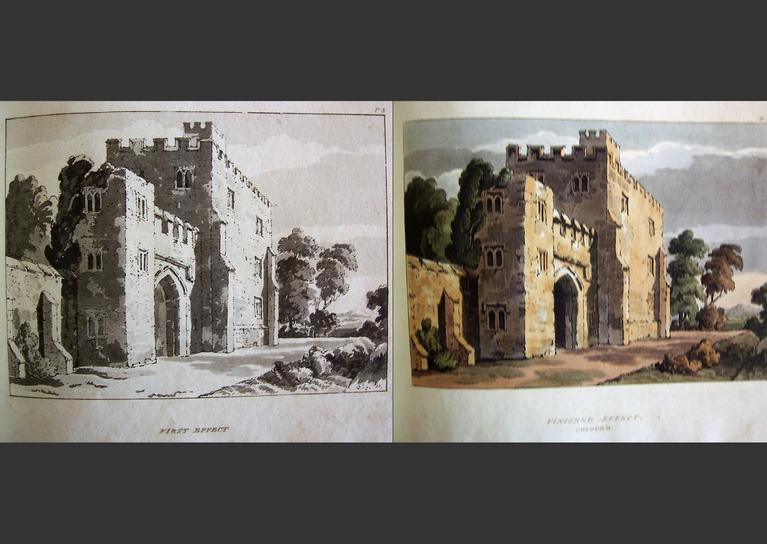Blog
30 April 2020

Continuing last week’s theme of combinations of print and painting: Emmanuel is very fortunate that Graham Watson presented his collection of colour-plate books to his old college in 1975. This is a library of around 1,700 books illustrated with hand-coloured engravings, mostly created between 1770 and 1840, before the invention of colour printing.
Book illustrations printed from woodcuts or copper plates and subsequently coloured by hand had appeared from the early days of printing. But in the aquatint process, used in many Graham Watson books, not just simple lines but graduated tones could be etched on to the copper plate. Over the black and white image printed from this plate, water-colour washes could then be applied, with the graduated tones in the underlying print producing subtle effects in the hand-coloured final product.
The fashion for such colour-plate books was a particularly British enthusiasm, and went hand in hand with a very British taste for water-colours which was developing over the same period. So it is very appropriate that the Graham Watson Collection includes many hand-coloured books that were published with the aim of teaching the amateur artist those arts of water-colour painting which were on display in colour-plate books generally.
.png)
.png)
A good example is the plates shown from William Pyne’s Rudiments of Landscape Drawing, In a Series of Easy Examples (London, 1812). These are the fourth and fifth in a series of five stages that begins by guiding the pupil in first drawing a bare outline with correct perspective. The second stage is the ‘Improved Outline’ which ‘must be firmly drawn with a black-lead pencil’ and adds in most of the detail of masonry and foliage. Third comes the ‘First Effect’ which is much concerned with supplying the shadows of differing depths. The fourth plate shown here is the ‘Finished Effect’ which applies the final degrees of shading, with spaces of white paper left to receive the colouring. For both the shading and colouring stages, detailed instructions are provided on which paints to mix for which effects. Another contemporary manual provides examples of no fewer than 436 tints for the pupil to match.
The authors of these guides promise instruction in composition, perspective, light and shade, the mixing and harmony of colours, and sketching from nature. They are addressed to an audience of ‘young persons’ and ‘the young artist,’ and often imply an audience of young ladies: in 1818 George Brookshaw published A New Treatise on Flower Painting, or Every Lady Her Own Drawing Master. Many such books have the format of two facing plates: one beautifully coloured, the other a black-and-white line drawing, not for ‘colouring in’ but as a guide to starting afresh. Emmanuel’s collection has a beautiful Studies of Flowers from Nature ‘Printed for and sold by Miss Smith, Adwick Hall near Doncaster’ (1818) which presents each flower ‘painted after Nature with a correct outline of each and instructions for producing a facsimile of the finished drawing by Miss Smith’. It is a reminder of the generations of amateur artists schooled in water-colour that were to follow.
Barry Windeatt (Keeper of Rare Books)
Images by Helen Carron (College Librarian)
